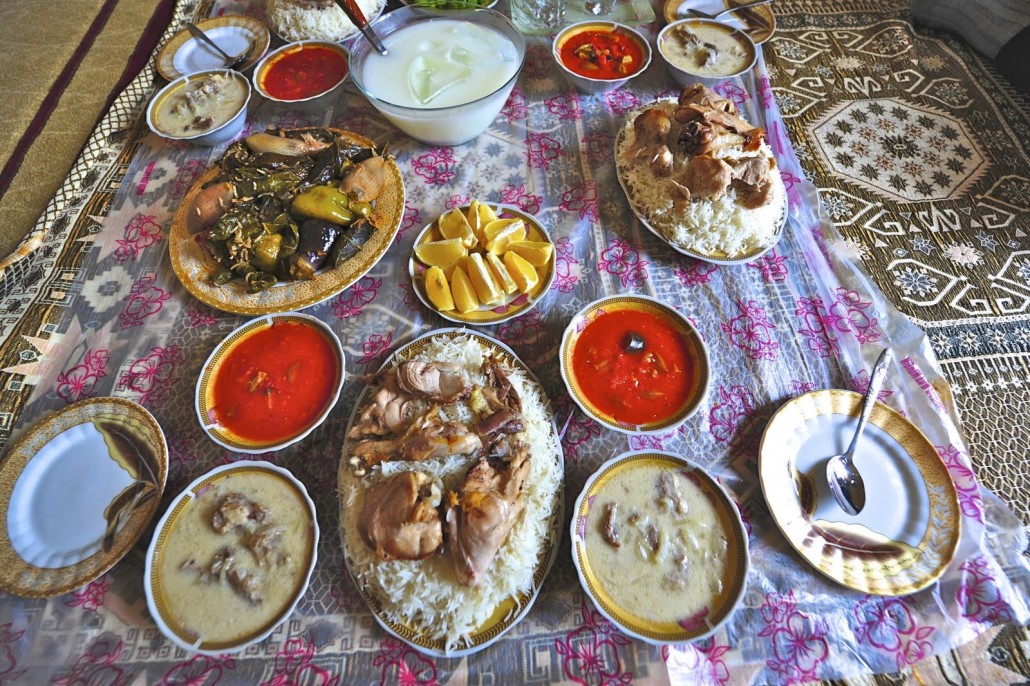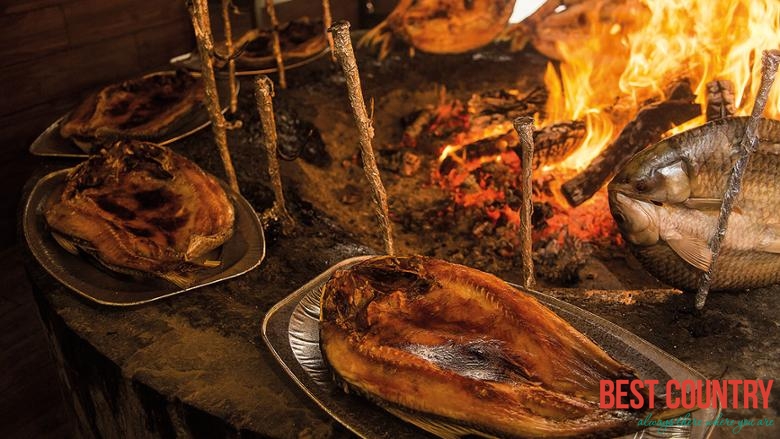Iraqi cuisine has changed and evolved since the time of the Babylonians, Sumerians and Assyrians. The cuisine has been influenced by those ancient civiliSations, which also had influence Greek and Persian cuisines. With the coming of Islam and the spread of Arab culture, which influenced the region, the food was enhanced to combine old and new sets of tastes.
Iraq Cuisine
 As Baghdad became the centre of the Islamic world, Muslims from all over (Africa, India, China, Indonesia, etc.) visited Iraq, which gave Iraq new twists to its food. As Iraqis traveled, trading absorbed Mediterranean flavors.
As Baghdad became the centre of the Islamic world, Muslims from all over (Africa, India, China, Indonesia, etc.) visited Iraq, which gave Iraq new twists to its food. As Iraqis traveled, trading absorbed Mediterranean flavors.
With the Ottoman rule of Iraq, influences of Turkish cuisine also became incorporated into Iraqi recipes.
The Iraqi cuisine is generally a heavy cuisine with more spices than most Arab cuisines. Iraq's main food crops include wheat, barley, rice, vegetables and dates. Vegetables include eggplant, okra, potatoes and tomatoes.
Beans such as chickpeas and lentils are also quite common. Common meats in Iraqi cooking are lamb and beef; fish and poultry are also used.
 Soups and stews are often prepared and served with rice and vegetables. Although Iraq is not a coastal area, the population is used to consuming fish, however, freshwater fish is more common than saltwater fish. Masgouf is one of the most popular dishes.
Soups and stews are often prepared and served with rice and vegetables. Although Iraq is not a coastal area, the population is used to consuming fish, however, freshwater fish is more common than saltwater fish. Masgouf is one of the most popular dishes.
Biryani although influenced by the Indian cuisine, is much milder with a different mixture of spices and a wider variety of vegetables including potatoes, peas, carrots and onions among others.
Dolma (vine leaves, cabbage, lettuce, onions, aubergine, marrow or cucumbers stuffed with rice, meat and spices) is also one of the popular dishes.
Iraqi cuisine is also famous for its extremely tender kabab as well as its tikka. A wide verity of spices pickles and amba (tangy mango pickle condiment) are also extensively used.